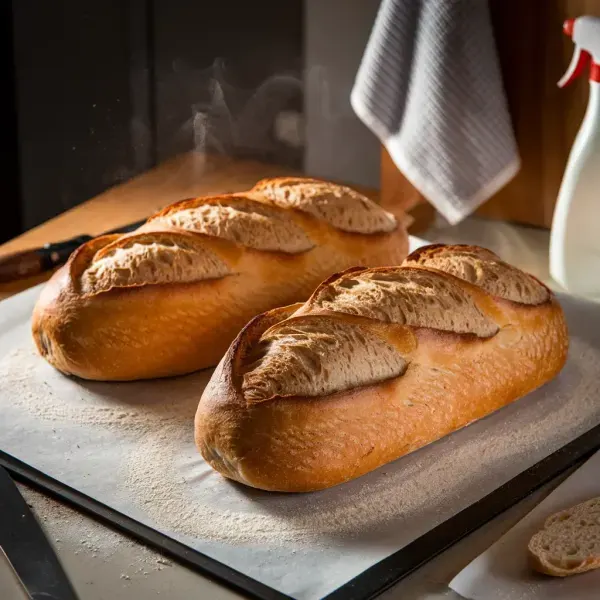
 1497 minutes
1497 minutesA rustic artisan ciabatta with a tangy crust, perfect for sandwiches or as a side to your favorite soup.
1. Prepare the Sponge
To start, combine 1 cup of flour, 1/16 teaspoon of yeast, and 1/2 cup of water in a medium bowl. Mix these ingredients together until you have a smooth batter. Cover the bowl with plastic wrap and let it sit at room temperature for at least 8 hours, or up to 24 hours. This long fermentation time allows the sponge to develop a deep, tangy flavor.
2. Prepare the Dough
In a large bowl or the bowl of a stand mixer, mix the sponge with 2 cups of flour, 1.5 teaspoons of salt, 0.5 teaspoons of yeast, 0.75 cups of water, and 0.25 cups of milk. If using a stand mixer, start with the paddle attachment to combine the ingredients on low speed for about a minute, then switch to the dough hook. Knead on medium-low speed for 4-6 minutes, or until the dough is smooth and shiny. If kneading by hand, it'll take about 10 minutes. The dough should be elastic and slightly sticky, which is key for the ciabatta's chewy texture.
3. First Rise
Once your dough is ready, transfer it to a large, lightly oiled bowl. Cover with plastic wrap and let it rise at room temperature for about an hour, or until it has doubled in size. During this first rise, you’ll need to fold the dough twice. Use a rubber spatula or a bowl scraper to gently lift and fold the dough over itself every 30 minutes. These folds help to strengthen the dough's structure.
4. Shape the Loaves
After the first rise, turn the dough out onto a floured surface. Divide it in half using a bench scraper and gently shape each piece into a rough rectangle. Place the loaves on a piece of parchment paper, cover them with plastic wrap, and let them rest for about 30 minutes. While the dough is resting, preheat your oven to 450°F with a baking stone on the middle rack. This preheating ensures that the stone is hot enough to give the bread a good initial rise, known as oven spring.
5. Bake the Loaves
When the dough has finished resting, use a pizza peel to slide the parchment paper with the loaves onto the hot baking stone. Bake the loaves for 22-27 minutes, spraying the oven with water twice within the first 5 minutes to create steam. This steam is crucial for developing a crisp, golden-brown crust. The loaves are done when they are deep golden brown and sound hollow when tapped on the bottom. Transfer the baked loaves to a wire rack to cool completely before slicing.
Maintain a high hydration level (around 75-80%) for the dough to create large holes and a light crumb; handle the sticky dough with wet hands or a scraper.
Mix just the flour and water and let it rest for at least 30 minutes before adding salt or yeast to help the flour fully hydrate and begin gluten development.
Preheat your oven to around 450-475°F (232-246°C) with a baking stone or steel inside for a blast of heat from below.
Create steam during the initial baking phase by using a preheated cast-iron skillet with ice cubes or by spraying the oven walls with water to achieve a tangy, rustic crust.
Create a biga or poolish the night before to add complexity to the flavor of your ciabatta and contribute to the tanginess.




Comments (0)